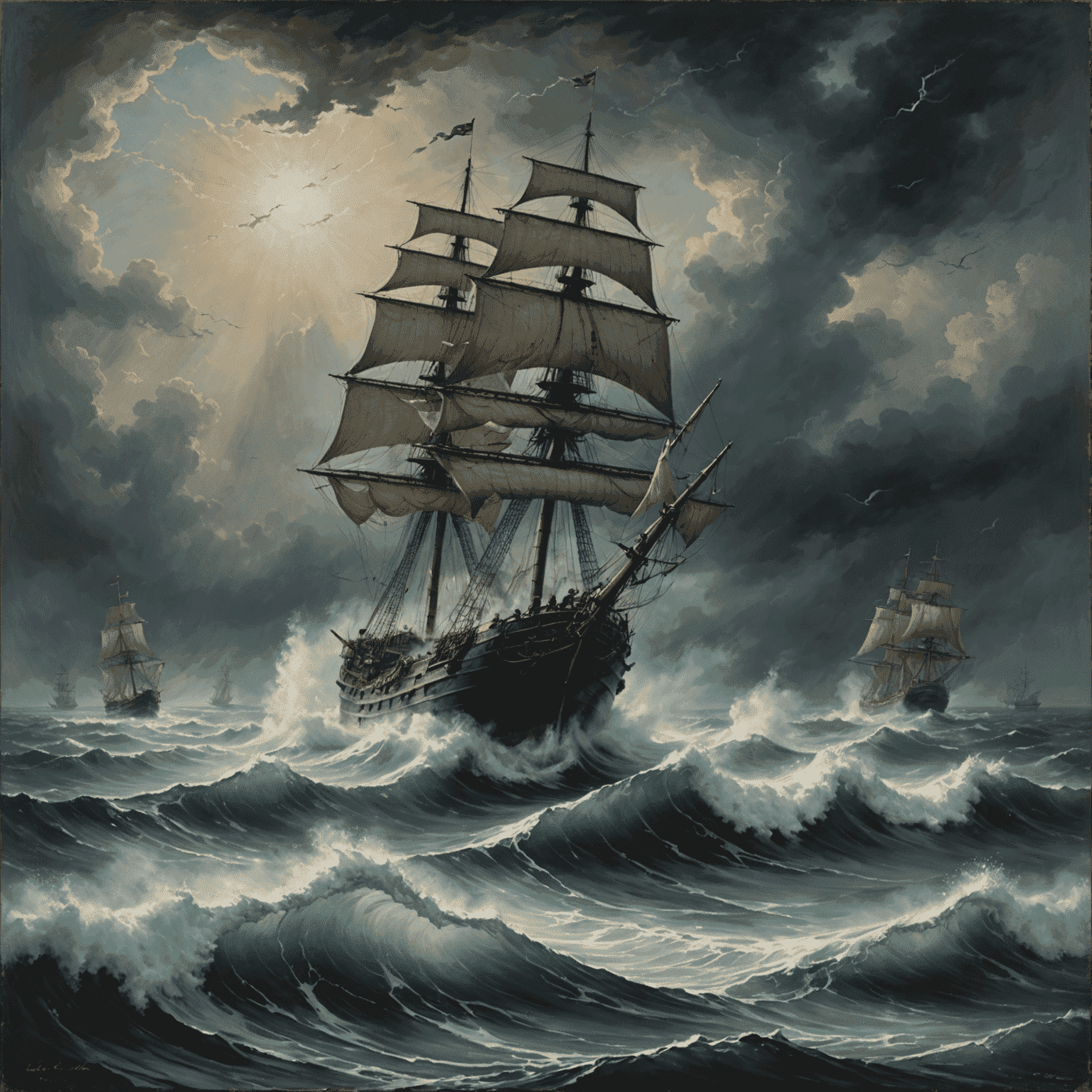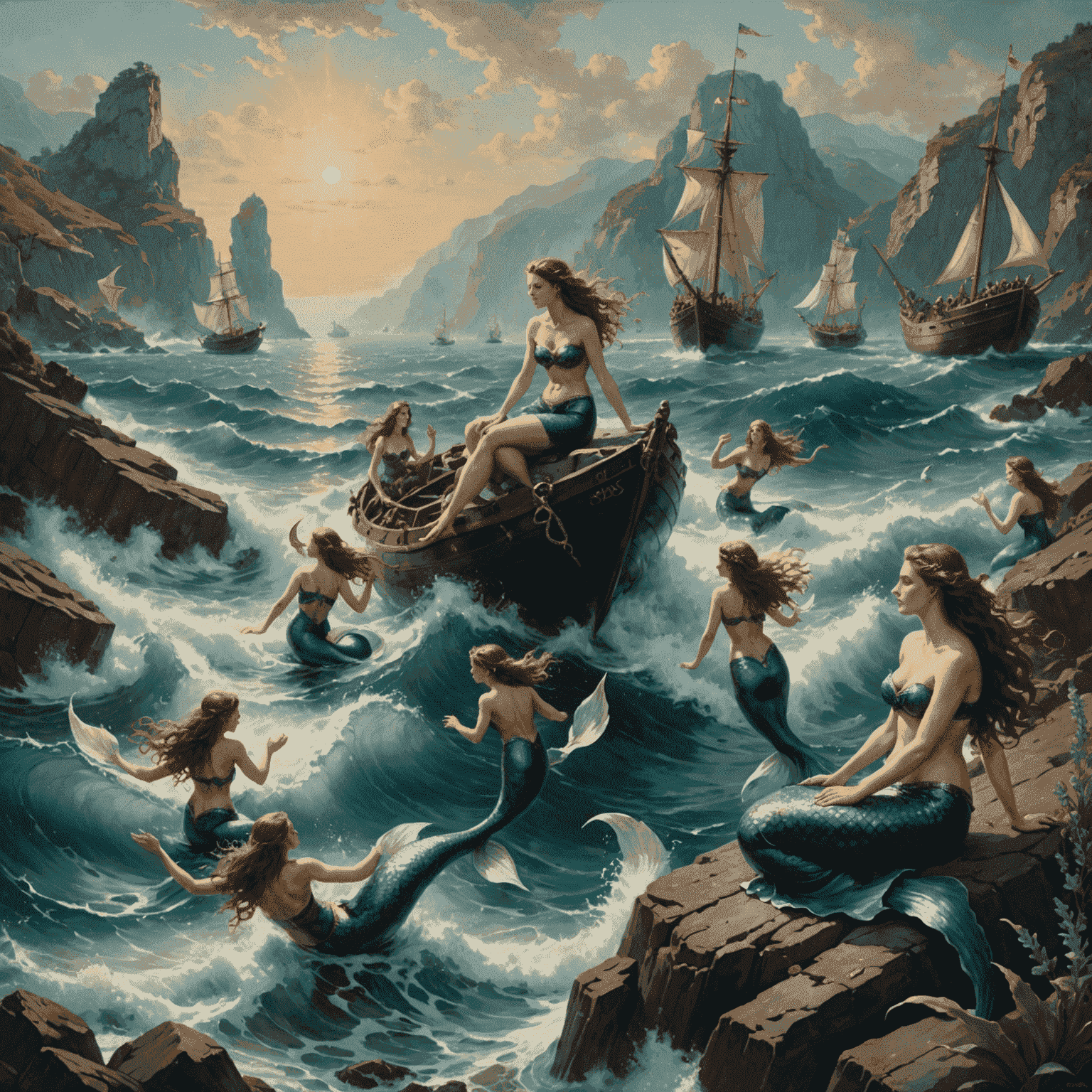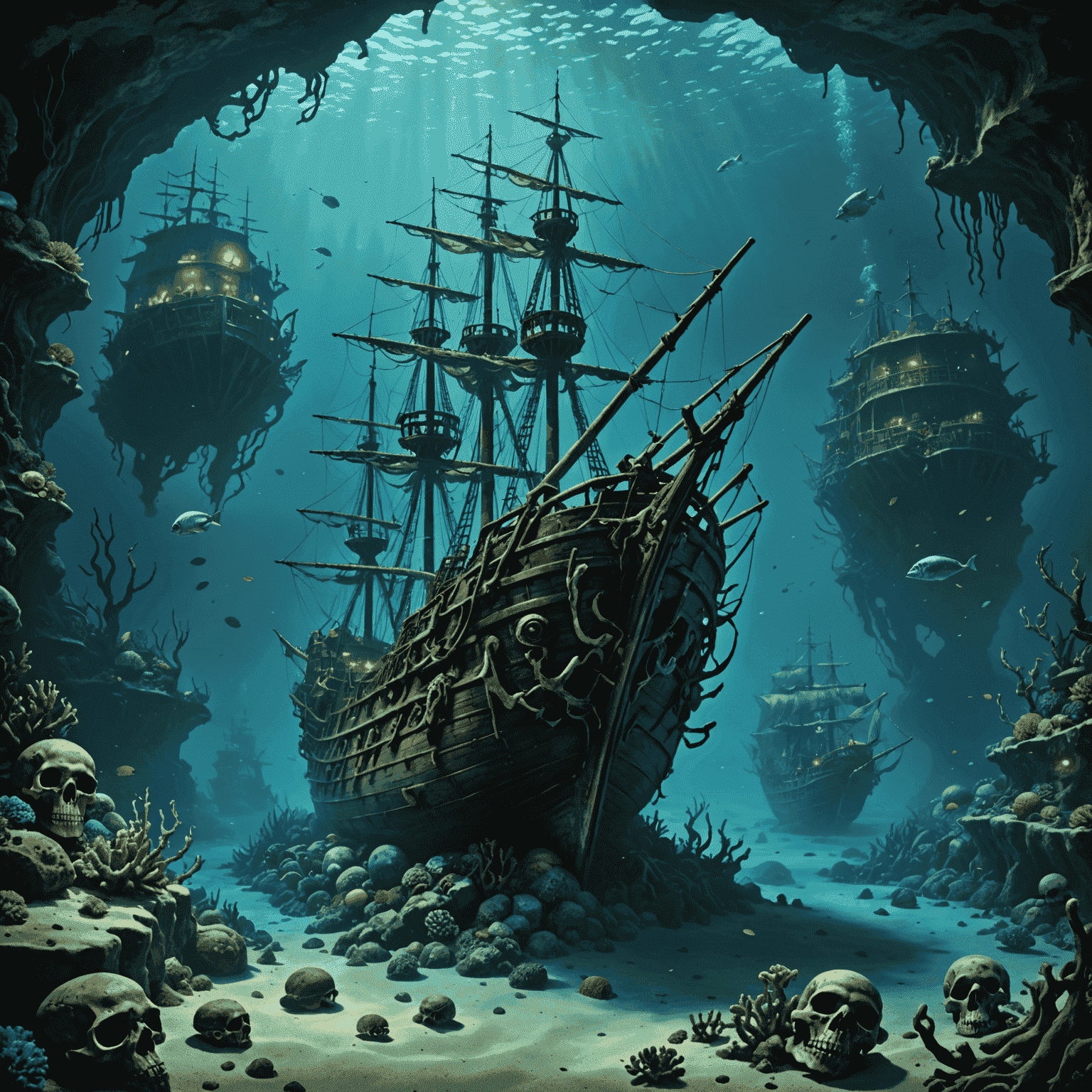Maritime Legends and Folklore

For centuries, the vast and mysterious oceans have inspired countless tales of wonder, fear, and supernatural occurrences. These maritime legends and folklore have been passed down through generations of sailors and have found their way into art and literature, shaping our cultural understanding of life at sea.
The Flying Dutchman
Perhaps one of the most famous maritime legends is that of the Flying Dutchman. This ghostly ship is said to be doomed to sail the seas for eternity, never making port. The legend has inspired numerous paintings, novels, and even operas, serving as a powerful symbol of the perils and isolation of seafaring life.
Mermaids and Sirens
The allure and danger of the sea are often personified in the myths of mermaids and sirens. These enchanting yet deadly creatures have been depicted in art throughout history, from ancient Greek pottery to Pre-Raphaelite masterpieces. Their stories serve as cautionary tales about the seductive and treacherous nature of the ocean.

Kraken and Sea Monsters
The depths of the ocean have long been thought to harbor monstrous creatures. The Kraken, a giant squid-like beast capable of dragging entire ships to the bottom of the sea, has been a subject of both terror and fascination. Medieval maps often featured illustrations of such sea monsters in uncharted waters, reflecting the fear of the unknown that pervaded maritime exploration.
Superstitions at Sea
Sailors have developed a rich tapestry of superstitions over the centuries. From the belief that whistling on board can summon storms to the practice of placing coins under the mast for good luck, these traditions have been documented in sailors' journals and depicted in maritime art. Many of these superstitions continue to influence modern seafaring practices.
Davy Jones' Locker
The concept of Davy Jones' Locker, a metaphor for the bottom of the sea and the final resting place for drowned sailors, has been a powerful motif in maritime folklore. This legend has inspired countless artistic representations, from somber paintings to dramatic literary descriptions, embodying the ever-present danger of life at sea.

Conclusion
These legends and folklore continue to captivate our imagination and influence modern popular culture. They serve as a testament to the enduring mystery and majesty of the sea, reminding us of the rich maritime heritage that has shaped human history and art. As we explore these tales at the Hetscheepvaart Museum in Amsterdam, we gain a deeper appreciation for the cultural significance of our relationship with the ocean.